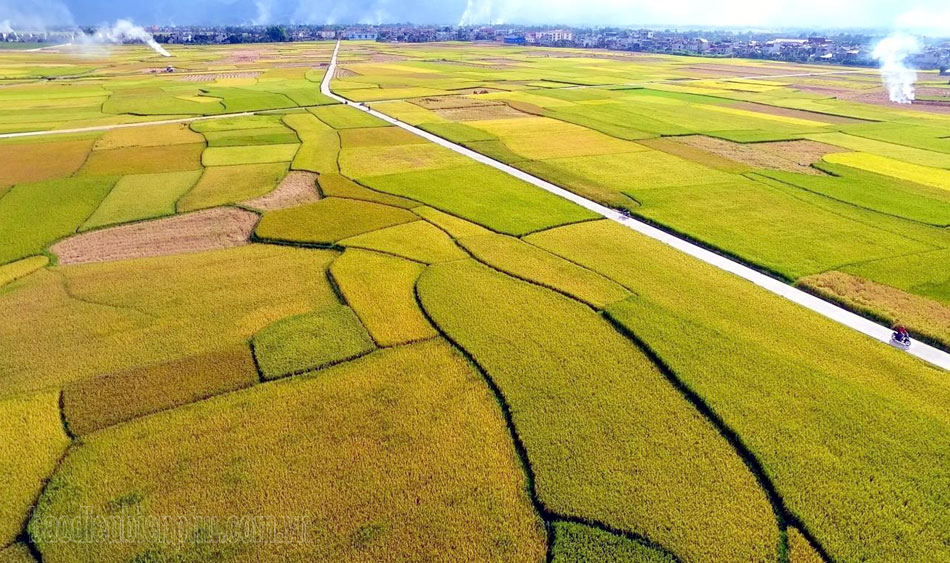
Restructuring of fields and products
Based on the orientation and socio -economic development plan of the province; the potential, advantages of the locality and forecast of market demand, Dien Bien province has organized a review and classification to structure the local key product groups including 11 groups in the following fields: Cultivation (7), livestock (1), forestry (2), aquaculture (1). In the 11 key product groups of the province, there are 5 product groups in the list of national key products.
Mr. Tran Van Thuong, Deputy Director in charge of the Department of Agriculture and Rural Development, said: Through restructuring, the economic structure of the industry has clearly shifted towards greater efficiency. In addition to the role of providing food and foodstuffs to meet people's needs, agricultural production has focused on improving quality and added value, developing production towards commodities.
Among the agricultural sectors, the cultivation sector has achieved the most remarkable results. In the period of 2015 - 2023, Dien Bien province focused on directing the implementation of crop restructuring in accordance with local advantages, market demand and climate change adaptation. Localities increased the expansion and reclamation of wet rice cultivation areas, converting ineffective corn and upland rice cultivation areas to other crops to increase product value and income for producers. In 2023 alone, the area of reclaimed and restored unused land into specialized wet rice land reached 1,041.34 hectares; the area of rice land converted to other crops was 2,325.42 hectares (of which 2-crop rice land was 10 hectares, 1-crop rice land was 115.33 hectares and upland rice land was 2,210.09 hectares). At the same time, synchronously implement integrated pest control solutions, apply scientific and technological advances to production, increase testing, and use new, high-quality crop varieties. Therefore, grain output has increased steadily over the years: 277,129.19 tons in 2021; 282,647 tons in 2022; 285,519.25 tons in 2023 (exceeding the resolution target of 280,000 tons by 2025).
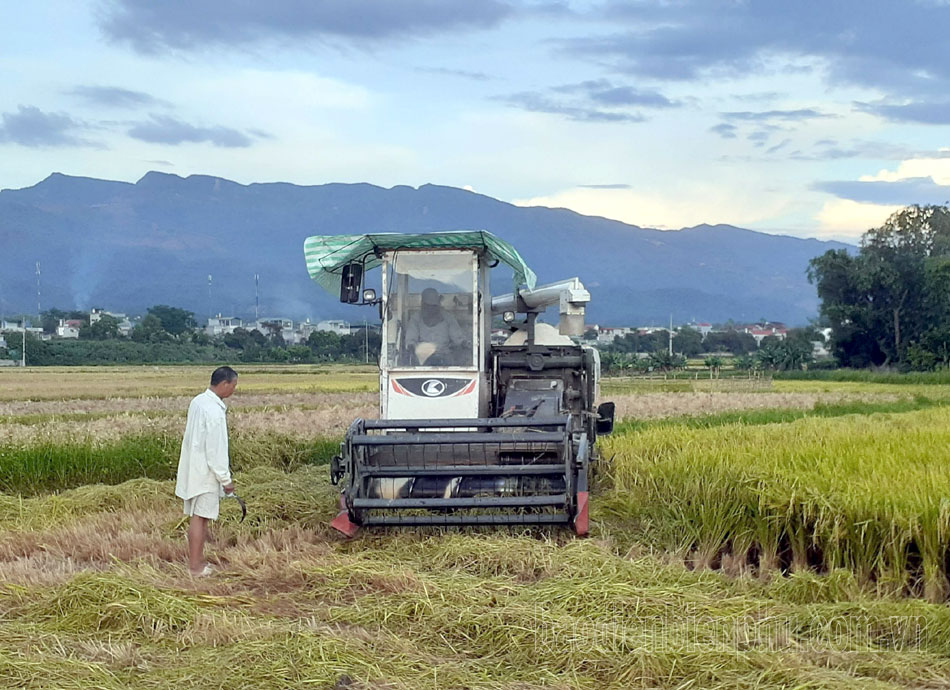
Before 2000, wet rice production only revolved around a few local rice varieties, rice output basically met food security needs. By 2023, the wet rice area reached 30,097.99 hectares, of which over 11,000 hectares were high-quality rice such as: Seng cu, Bac thom so 7, J02, Hana 102, sticky rice... in Dien Bien, Tuan Giao, Muong Ang districts and Dien Bien Phu city.
Currently, Dien Bien district has over 4,100 hectares of high-quality rice, of which Bac Thom No. 7 variety is granted the geographical indication "Dien Bien" and the origin traceability code. The rate of mechanization in land preparation is currently over 90%; mechanization in harvesting is 70% and in sowing is 6%. By 2025, Dien Bien district strives to mechanize 100% of the high-quality rice area.
Mr. Ngo Xuan Chinh, Vice Chairman of Dien Bien District People's Committee said: The district will continue to research and apply many new technologies and science in agricultural production, especially for high-quality rice varieties. Along with that, focus on developing agricultural production in the direction of goods, focusing on enhancing the value and brand of products.
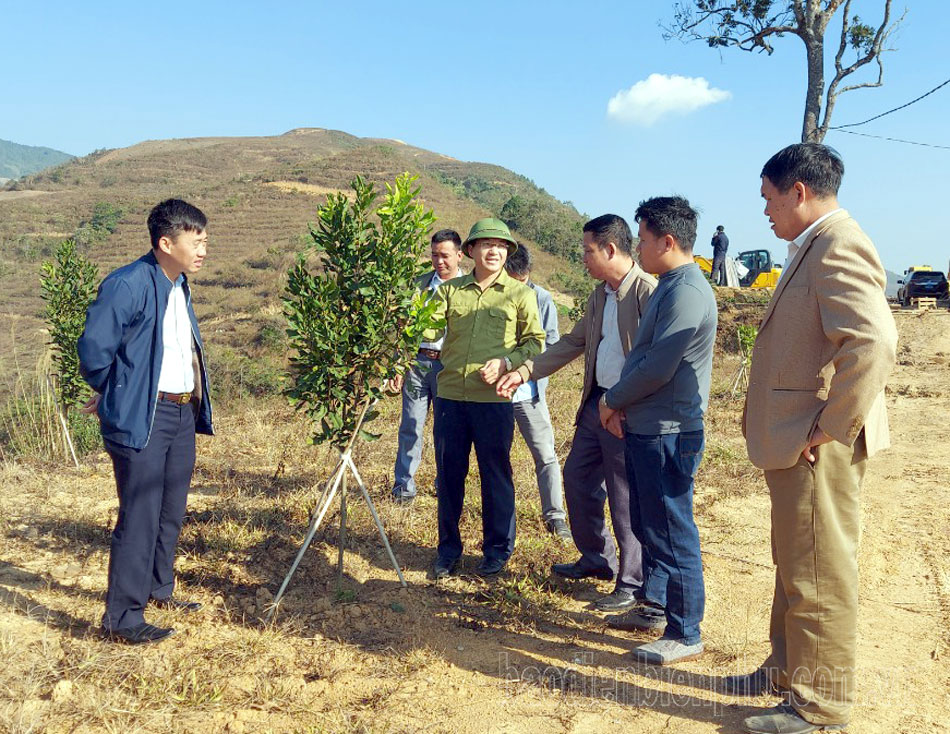
Along with rice, Dien Bien province also focuses on restructuring some local key products including: corn, tea, coffee, rubber, macadamia, fruit trees, vegetables and livestock and aquaculture products (buffalo, cow, goat and tilapia). Up to now, the province has formed some concentrated commodity production areas such as: High-quality rice about 8,000 hectares in Dien Bien, Tuan Giao, Muong Ang districts, Dien Bien Phu city; corn 9,000 hectares in Tuan Giao, Tua Chua, Dien Bien, Dien Bien Dong; 230 hectares of specialized vegetables in Dien Bien district; 3,229 hectares of macadamia in Tuan Giao, Dien Bien, Muong Nhe districts, Dien Bien Phu city; 597 hectares of tea in Tua Chua; 3,300 hectares of coffee in Muong Ang and Tuan Giao; Fruit trees (grapefruit, orange, mango, longan) about 3,000 hectares in Tuan Giao, Muong Ang, Dien Bien districts.
Product branding
Forming concentrated raw material areas, Dien Bien province focuses on building and implementing linkage projects, forming linkage chains from production to consumption of agricultural products.
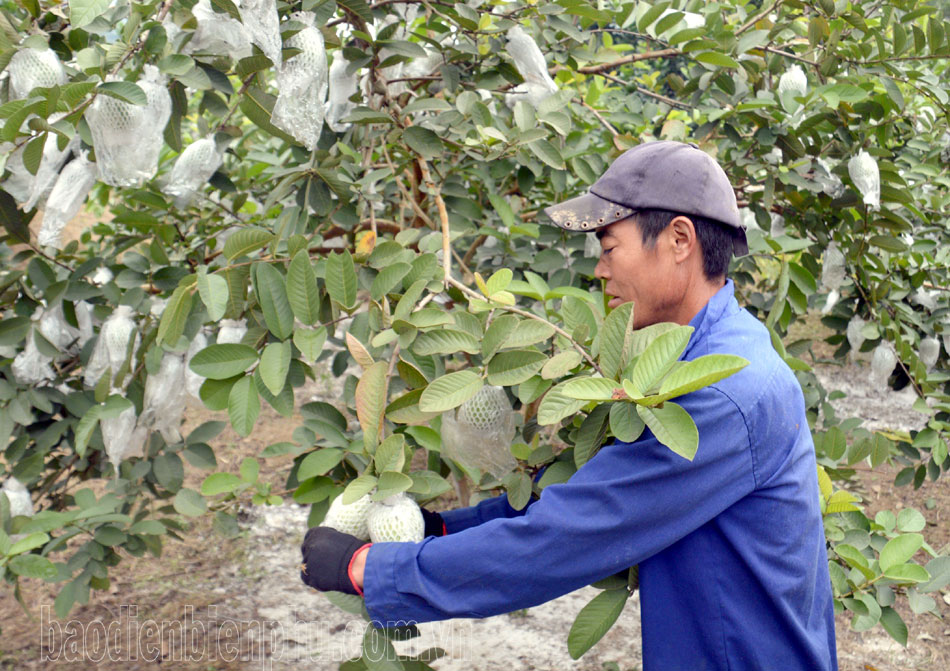
In the period of 2021 - 2023, Dien Bien province implemented 125 production linkage projects in 10/10 districts, towns and cities. The whole province has successfully built and developed 33 production linkage chains to product consumption. The chains have attracted the participation of many enterprises, cooperatives, farms and households, bringing much higher economic efficiency than traditional production. For example: Growing safe vegetables reduces production costs by 10 - 15%, output increases by 15 - 25%, profits increase by 30 - 35 million VND/ha; linking rice production according to single-variety fields, applying mechanization has reduced production costs, profits increased by 15 - 20 million VND/ha... Some highly effective production linkages have been and are being replicated in the area such as: High-quality rice supply chain of Thanh Yen Cooperative; safe pineapple supply chain of Na Sang Cooperative, Muong Cha district; honey product chain of Dien Bien Honey Bee Cooperative; high-quality rice seed supply chain of Tam Thien Cooperative; safe vegetable production chain of Noong Luong Cooperative...
Dien Bien agricultural products are gradually known, researched and used by consumers inside and outside the province. However, to bring products to demanding markets, supermarket chains and large retail markets, products must be recognized as meeting OCOP standards. Therefore, from 2019 to present, Dien Bien province has focused on developing agricultural products that meet OCOP standards. By the end of 2023, the whole province had 72 products certified as provincial-level OCOP products (2 4-star OCOP products, 64 3-star OCOP products and 6 products being proposed for upgrading from 3 stars to 4 stars); 40 products were recognized as typical rural industrial products, of which 30 were processed agricultural products such as: Tea, coffee, macadamia, rice.
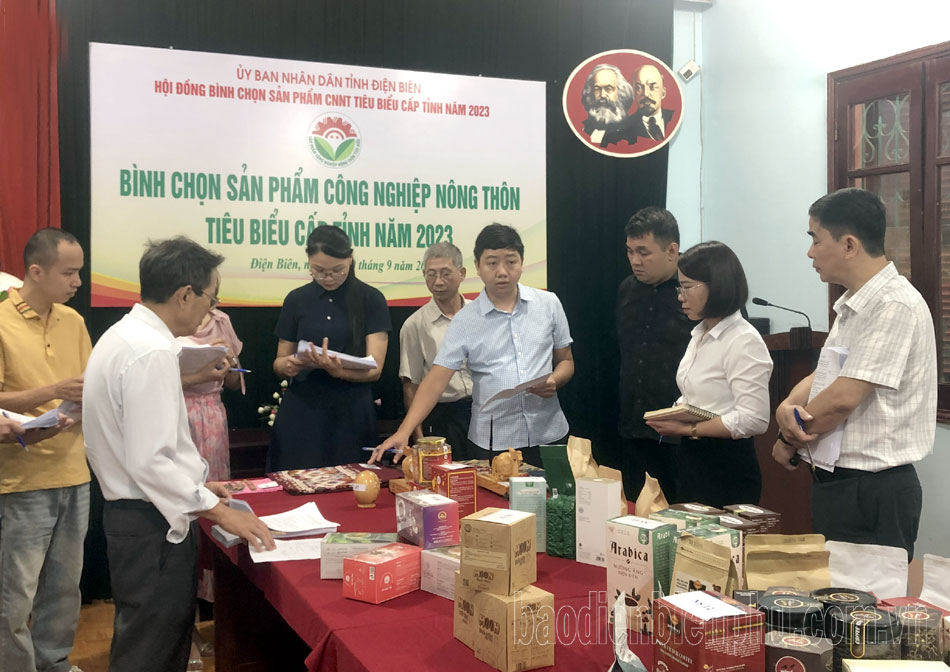
Established in 2016, Thanh Yen Agricultural Service Cooperative produces high-quality rice according to the "3 no" principle: No chemical fertilizers, no pesticides, no herbicides. To date, the Cooperative has attracted 230 farming households to participate in the production chain; the area has increased from 31 hectares to more than 150 hectares. Tam Sang rice products of Thanh Yen Cooperative ensure 100% food safety and hygiene standards and are recognized as meeting 3-star OCOP standards. To date, the brands "Tam Rice", "Tam Sang Rice" have been widely distributed in many reputable supermarket chains and clean food stores in the markets of Hanoi, Hai Phong, Quang Ninh, Hung Yen... and in large supermarket chains such as Winmart, UCAmart.
Attracting investment in agriculture
In recent times, Dien Bien province has implemented many solutions to improve the business investment environment, simplify administrative procedures and processes in a proactive manner to serve businesses such as: Reducing the time to issue business registration certificates from 3 days to 1.5 working days; organizing regular meetings with businesses to resolve difficulties and obstacles for businesses; organizing many investment attraction activities... Thereby, attracting corporations, businesses, and cooperatives to invest in agricultural projects.
In the period of 2021 - 2023, the whole province has 28 enterprises and investors from inside and outside the province to survey and establish investment projects; the province has approved the policy of 14 investment projects in the field of agricultural and forestry development with a total investment of 11,981 billion VND. The total disbursed capital of investors to implement the projects is estimated at 1,493 billion VND.
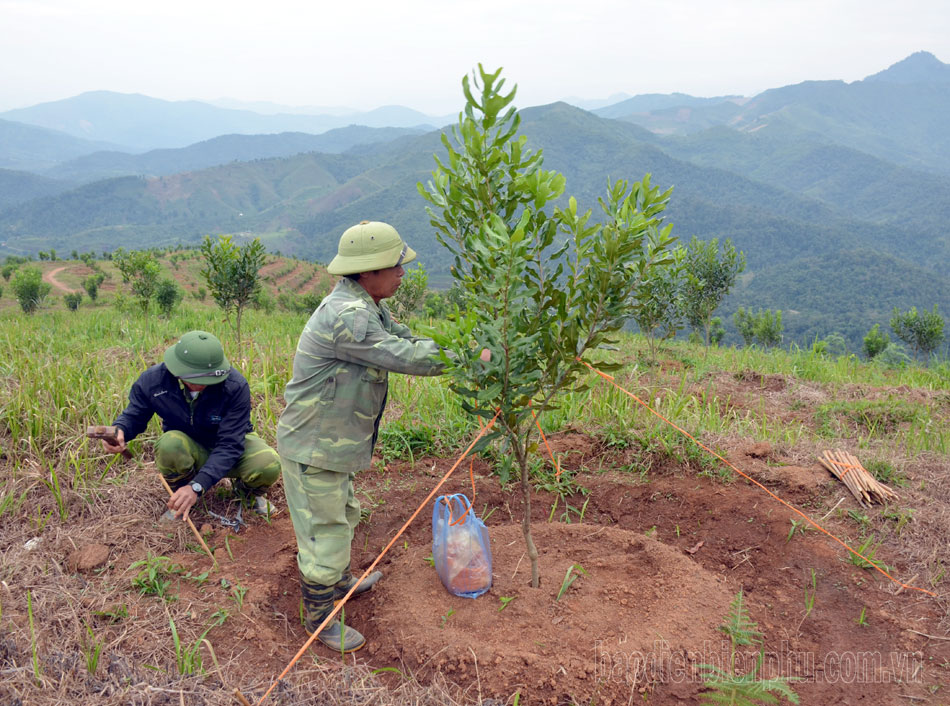
Among the agricultural investment projects in the province, macadamia development projects account for a large proportion. Currently, the province has 13 macadamia planting projects approved by the province for investment, with a total scale of 61,223 hectares. The projects have planted 6,629 hectares, concentrated in the districts of Tuan Giao, Muong Ang, Dien Bien, Muong Nhe, Dien Bien Dong and Dien Bien Phu city. In addition, investors are interested in investing in projects on afforestation, development of medicinal plants, fruit trees, etc.
Along with attracting investment in production development, the province focuses on attracting businesses to invest in the field of product processing. The province currently has 1,847 processing facilities (60 enterprises, 96 cooperatives, 27 cooperative groups, 15 farms and about 1,649 business households). Many processing facilities have invested in modern and synchronous technological lines such as: 2 rice processing factories, 2 Shan Tuyet tea processing companies, 3 roasted coffee processing facilities; 69 facilities for manufacturing, processing and preserving wooden furniture.
The average growth rate of the agriculture, forestry and fishery sector in the 2021-2023 period reached 5.3%, exceeding the Resolution's target by 2025 by 2.14 percentage points. The structure of the agricultural sector by 2023 accounted for 15.6% of the province's GRDP. In 2023, the value of crop products/ha is estimated to increase by 18.2% compared to 2020, exceeding the Resolution's target by 3.2 percentage points by 2025; aquatic product output increased by 5.78%; the livestock and forestry sectors both achieved and exceeded the set plan.
Lesson 4: Towards green agricultural production
Source











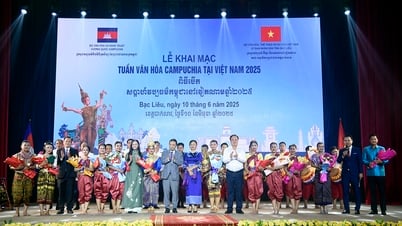
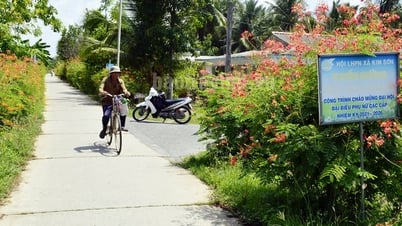

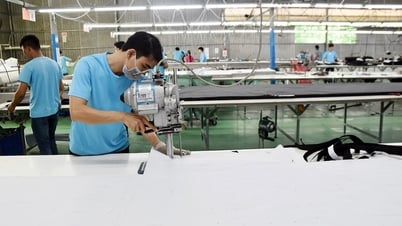








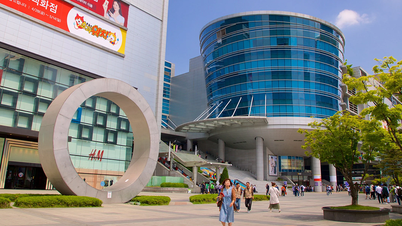























































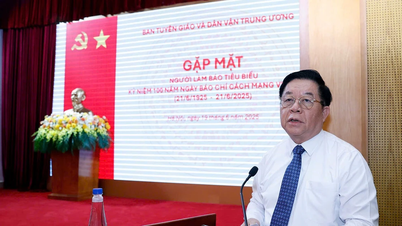

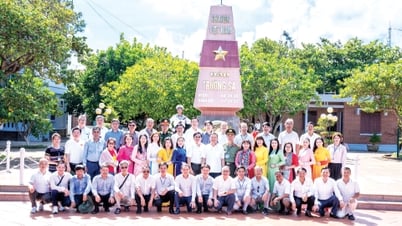

















Comment (0)